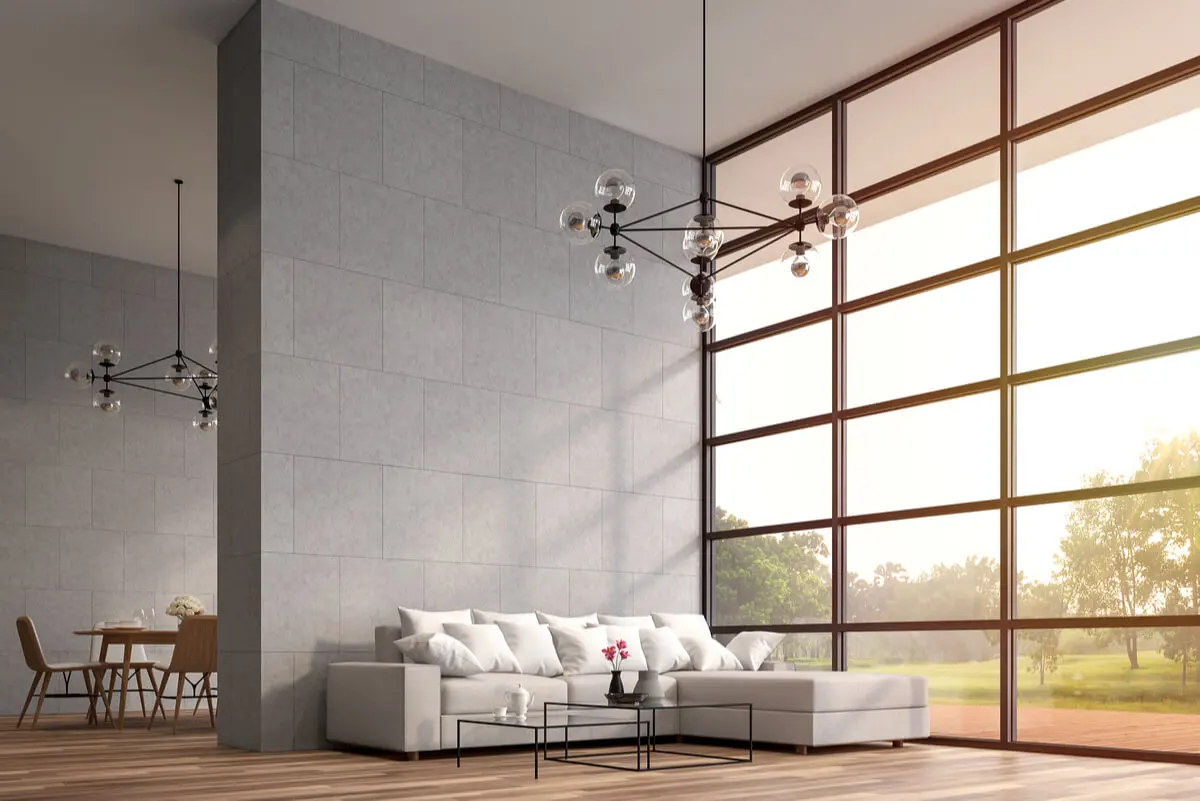7 Tips to Improve the Acoustics of a Room

A noisy room is unpleasant, but we can improve its acoustics. Sometimes we pay more attention to the design and decoration our homes while forgetting important details related to sound insulation.
Do not underestimate the quality of sound in a room, especially in those in which you like to spend more time: the kitchen, your bedroom, and the main living room. Keep in mind that exposure to intense noise can cause acoustic trauma, just like exposure to sound pollution.
By preparing and protecting our rooms we avoid sounds from one room to another, from the street, from neighbors, or machinery. It’s always a good idea to know the alternatives available in the market to solve soundproofing problems in your home.
What is acoustic insulation?
To isolate acoustics is to silence the noise coming from outside and prevent the noise generated inside the house from filtering to the outside. It consists of forming barriers to absorb sound waves, using materials such as cardboard, plaster, steel, and others that contain sufficient mass.
It differs from acoustic conditioning in that the latter is based on improving the sound quality inside the room so that there’s no echo. Thus, conversations, movies, or listening to music will be more pleasant and without rumbling.
With both techniques, the aim is to protect the space and provide additional comfort.
We think you may also enjoy reading this article: Cozy Decoration: What Is It and How Can I Implement It?
Recommendations to improve the acoustics of a room
Generally, ceilings, walls, and floors are flat, which contributes to echo and reverberation, which is measurable through methods such as the one proposed by the Laboratory of Acoustics and Sound Mario Guillermo Camín.
It is as if the sound arrives late, because it spreads in all directions it finds. But is it possible to fix this? The answer is yes! In this article, we’ll teach you a few practical tricks that can be done without too much investment to improve the acoustics of a room.
1. Cover glass windows

When your doors or windows are glass, you have to cover them with plush curtains or thick fabric. Besides giving a plus to the decoration, they contribute to improving the acoustics of the room.
Keep in mind that glass emits wave vibrations and affects sound clarity, such as when playing music, for example. A similar effect occurs with porcelain and glass, as they’re poorly absorbent and end up as reflectors.
2. Use thick carpets
Continuing with the advice on absorbent materials, carpets of thick or plush fabrics are effective, thus retaining the sound and minimizing the distortions produced by the floors.
3. Move the furniture
Each element inside the room plays a fundamental role in the acoustics. The correct placement of furniture affects both reverberation and the time it takes for sound to reach the ears.
The key is to vary the arrangement of items in the room. The selection of each item also helps – i.e., give preference tor upholstered or wood furniture.
4. Distribute decorative plants
Natural plants scattered – but not between – favor the propagation of the sound that crosses through them, breaking down the waves, sending them to different directions, and enhancing the resonance.
They also function as sound diffuser panels. Apart from that, they decorate and set the mood, while minimizing stress and their care implies a form of distraction.
5. Use shelves and bookcases
These present an ideal combination for good acoustics: wood and paper. Both channel the emission, transmission, and reception of waves traveling in a room.
Consider using bookcases i your decor, as they’re able to balance the energy of other reflective objects, reduce the intensity of the waves and isolate the room so that the sound quality is not impoverished.
6. Try acoustic diffusers
Diffusers move sound from the highest to the lowest concentration as they soften the energy, dosing it into reflections coming from different places. This makes the waves weaker and weaker, but they do not lose power.
Do you want to make an easy homemade acoustic diffuser? We mentioned it above: its bookshelves!
7. Use absorbent panels
Their purpose is sound clarity. They collect excess energy that bounces off the walls. Foams, membranes, felt and textiles are types of panels easily available in stores.
An easy homemade way to solve this is with a canvas that is not plasticized and its upper edge can be adapted as foam insulation.
Like this article? You may also like to read: Open Concept: The Decorative Style You’ll Want to Know About
Materials that influence to improve the acoustics of a room
Although all building materials have certain basic acoustic properties, the best or poor sound quality depends on those used for each type of room. It’s not the same to implement concrete in a church as in the construction of a house.
The purposes are different and, therefore, the absorption of waves in each environment will be as well. It happens that the more absorbent the input is, the less reverberation will be felt. The following list specifies the materials related to soundproofing.
Recommended
- Wood fiber acoustic panels
- Rock wool
- Acoustic foams
- Glass wool
Not recommended
- Glass
- Metal
- Marble
- Exposed concrete
- Plastered masonry
- Ceramic tile
To know the sound absorption coefficient of construction materials, certain tables can be used as a reference, such as those offered by the Argentine Association of Computational Mechanics.

What you should always have to improve acoustics
The main recommendation to adapt the acoustics of a room that’s already been built is to pay attention to the materials selected for the decoration. It’s necessary that they’re soft and porous, since they offer a higher absorption rate.
These suggestions include wall or ceiling tapestries, heavy curtains, blankets, and carpets. In the case of rugs, they reduce impact noise, while curtains, being wavy, break the sound wave and work as a diffuser.
The paintings in your living room should be without glass. Opt for oil paintings instead of images framed in glass; remember that glass is reflective and lengthens booming sounds.
Surely a redistribution of the elements in your living rooms is enough to improve the acoustics of a room in your house. Apply the above tips and experience a cozy room where you can converse in a group without missing anything!
All cited sources were thoroughly reviewed by our team to ensure their quality, reliability, currency, and validity. The bibliography of this article was considered reliable and of academic or scientific accuracy.
- Castañeda J, González H. Medición del coeficiente de absorción del sonido. Scientia et Technica. Universidad Tecnológica de Pereira. Colombia; 2004. https://core.ac.uk/download/pdf/299840883.pdf
- Boschi C. Método para medir el tiempo de reverberación en recintos. Laboratorio de Acústica y Sonido “Mario Guillermo Camín”. Universidad Tecnológica Nacional – Facultad Regional Mendoza. Año 4. Volumen 3. Argentina; 2008. http://www1.frm.utn.edu.ar/laboratoriodeacustica/Metodo_experimental_para_medir_el_TR60.pdf
- Sánchez A. Historia de la reverberación. Diffusion Magazine. 2012. https://www.diffusionmagazine.com/index.php/biblioteca/categorias/historia/331-historia-de-la-reverberacion
- Budde L, Cravero G, Ferreyra P, Flores Mario, Longoni H, Ramos O, Tommasini F. Base de datos de coeficientes de absorción sonora de diferentes materiales. Asociación Argentina de Mecánica Computacional. Vol. 32. Argentina; 2013. file:///C:/Users/LUZYLEO/Downloads/4527-20445-1-PB%20(2).pdf
This text is provided for informational purposes only and does not replace consultation with a professional. If in doubt, consult your specialist.








